Deported U.S. veterans find aid, comfort in a Tijuana ‘bunker’
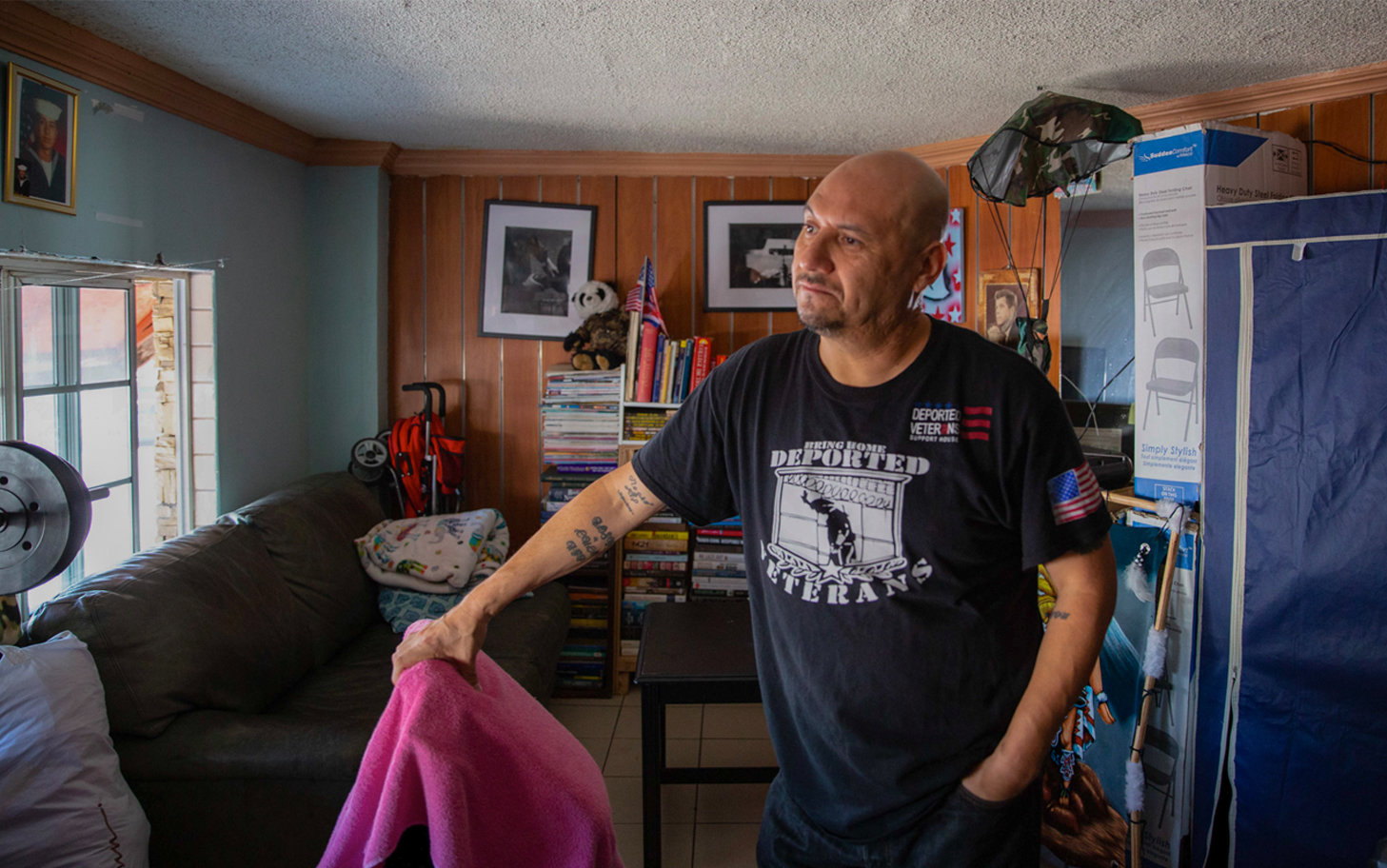
Loosely knit organizations along U.S.-Mexico border support deported vets
By Madeline Ackley/Cronkite News |
TIJUANA, Baja California, Mexico – In a neighborhood just south of San Diego stands a narrow, two-story home connected to a tire shop. It’s where U.S. military veterans go after the country they served deports them and there’s nowhere else to turn.
The men and women it serves call the place the Bunker.
Officially known as the Deported Veterans Support House, the Bunker is adorned with U.S. flags. Portraits of deported men and women in uniform line the wall above the staircase. Medals, uniforms, photos and discharge papers form a collage of lives spent in the service of a nation that was never legally theirs.
Hector Barajas-Varela runs the house with help from activist Yolanda Varona and occasional volunteers. Barajas-Varela knows the plight of deported veterans. He was brought to the U.S. from Mexico as a child and enlisted in the Army at 17. Several years after his honorable discharge, he was deported for committing a felony, and again after reentering the country.
The Bunker offers food, clothing, connection to legal aid, help with Department of Veterans Affairs benefits and even temporary shelter. The center relies on donations to stay afloat, but sometimes Barajas-Varela and Varona have to dip into their own pockets.
Barajas-Varela said he knows of about 500 deported veterans from around the world. But because there’s no official government count of deported veterans, it’s difficult to estimate how many might exist.
Loosely knit organizations like the Bunker have cropped up along the U.S.-Mexico border and beyond to support deported veterans – this year, Barajas-Varela helped open a support house in the Dominican Republic.
“We call it the Bunker here because … this is kind of like … our place for us to be safe,” he said.
Most deported veterans want to return to the U.S., and many come to the Bunker to fight their case, or wait for the passage of favorable legislation.
Recently, reforms have been proposed in Congress.
The Veteran Deportation Prevention and Reform Act of 2019, cosponsored by Rep. Raúl Grijalva, D-Tucson, was introduced in October. It aims to better track veterans in deportation proceedings, provide avenues for military families to gain citizenship and reexamine cases of veterans who already have been deported. If the bill becomes law, it could clear the way for deported veterans to return to the land they fought to defend.
Launching the Bunker
Barajas-Varela is passionate about the work he does, but he acknowledges it isn’t always easy.
“The population that I work with … most of them have been to prison, they have mental health issues,” he said. “And then when you get deported, you have the emotional trauma of being deported as well. So it’s a difficult community to work with.”
He understands.
Barajas-Varela, who was a lawful permanent U.S. resident at the time, served as a paratrooper in the Army’s 82nd Airborne Division for six years before being honorably discharged in 2001. But authorities deported him in 2004 after he fired a gun at an occupied car. He returned to the U.S. six months later, but authorities deported him again in 2010.
After leaving the military, Barajas-Varela said he struggled with mental health issues and began to spiral into a life of addiction. He served a prison term from 2001 to 2003 and spent another year in immigration detention.
He remembers his first deportation as unceremonious. He wasn’t provided with information, and he doesn’t remember signing any paperwork.
“I don’t even remember like anybody saying, ‘Welcome to Mexico,'” he said. “A gate opened up, and that was it.”
Six months later, he sneaked back into the U.S. and tried to start over. He began a relationship and had a daughter.

“The second time that I was deported was very difficult because I had finally a family and a daughter,” Barajas-Varela said. “Missing my daughter was really difficult.”
Adjusting to life in Mexico was a challenge. Barajas-Varela said he became depressed and again slipped into addiction. He spent six months on the street before he began to pick up the pieces.
In 2013, he converted his home into what would become the Bunker.
While he helped other veterans, Barajas-Varela began exploring legal avenues to return to the U.S. The American Civil Liberties Union took up his case, and he was eventually pardoned by California Gov. Jerry Brown.
Even though he became a U.S. citizen in 2018, he continues to operate the Bunker for his “brothers and sisters” who can’t return home.
“One of the things that we have in the military is you leave no man behind,” Barajas-Varela said.
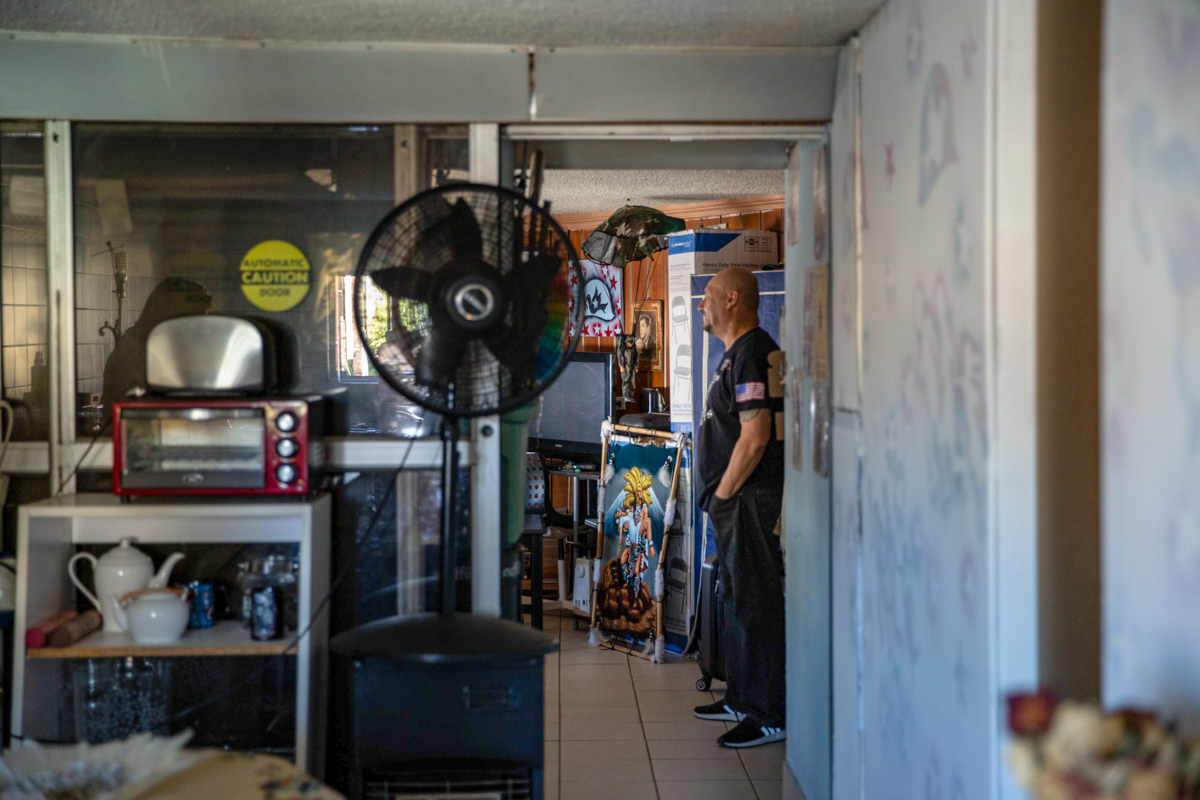
Living as a deportee
Irasema Coronado, who directs the School of Transborder Studies at Arizona State University, first heard about deported veterans in a news article more than 20 years ago. She has maintained contact with many deported veterans in her years of research into the lives of exiled servicemembers living mainly in Mexican border towns.
By taking a holistic approach to the veterans she surveys, Coronado has pieced together an intimate portrait of these servicemembers’ day-to-day lives, their shared hopes and anxieties.
“One of the things I’ve learned about this research is that it’s reciprocal,” Coronado said. “So I ask them, you know, ‘How are things going for you economically? How are things going for you socially? How are things going for you politically?'”
The servicemembers Coronado surveys have raised concerns about accessing their VA benefits and social services, navigating internal bureaucracies in Mexico and managing feelings of isolation and ostracization by locals.
“Many of them, their Spanish is very rudimentary and so that’s a big barrier,” Coronado said. “And then there is a perception by certain segments of Mexican society that you were deported because you did something wrong.”
Some U.S. service members avoid seeking help and isolate themselves, Coronado said. “They feel inadequate even asking where things are.”
Most of them, however, do have one thing in common. They wish to return to the place they call home: the United States.

For Leonel Contreras, 60, who served in the Army in 1976 and ’77, the little things in Mexico remind him he’s not home.
“Everything is backwards from what we’re taught to believe,” Contreras said. “Even the (electrical) sockets in the wall … they’re not the way they are in the United States.”
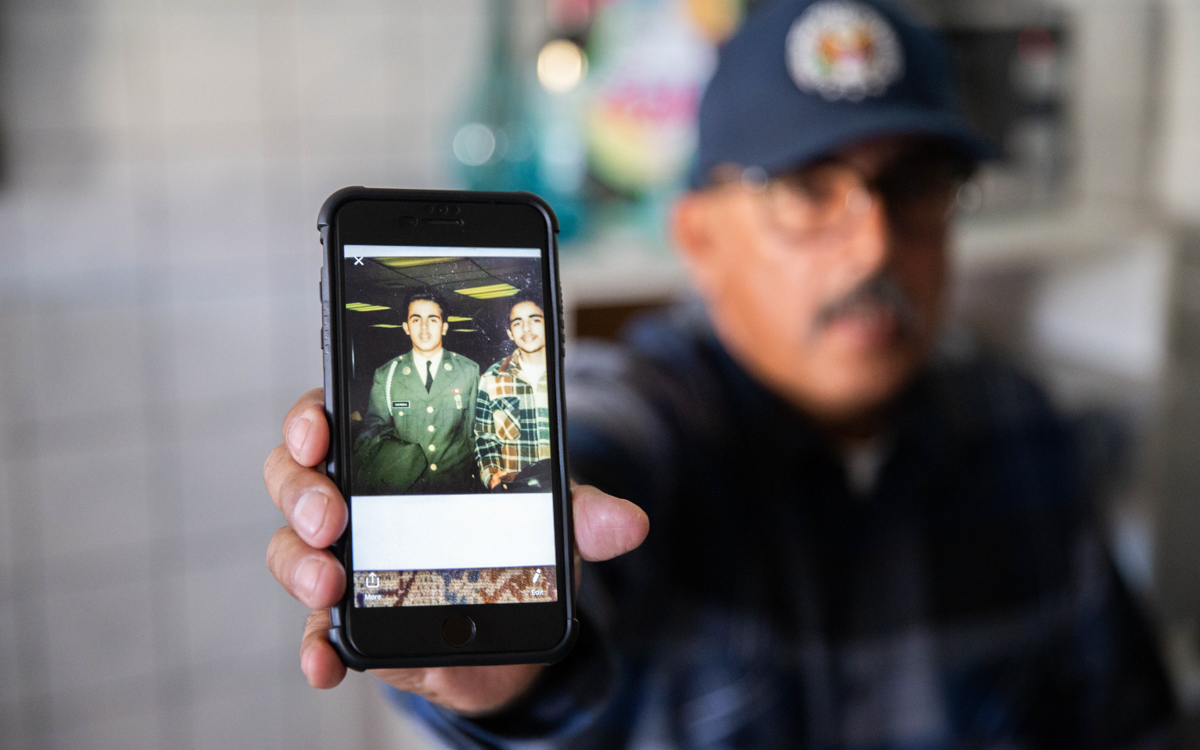
Leonel Contreras, a veteran who was deported after stealing a bicycle, has a son in the U.S. who is following his father's path of joining the U.S. military. (Photo by Mara Friedman/Cronkite News)
When Contreras was 4, his mother brought him and his brother to California as green card holders. Growing up in San Diego, Contreras looked up to the older kids in his neighborhood who joined the military, thinking, “One day, that’s going to be me.”
Tired of the structures of school and home life, Contreras asked his parents to sign his enlistment papers when he was 17. They begged him to reconsider but eventually relented.
He served in the infantry; ground troops who serve as the first line of defense. Although he never saw combat, the training left mental scars.
“You’re just being trained to kill,” he said.
After his honorable discharge, he began drinking and partying. His multiple drunken driving convictions eventually landed him in county jail, then prison.
“It just became a sequence of the same thing over and over again: violating parole, going back to prison, violating parole, going back to prison,” Contreras said.
When threatened with deportation, he didn’t take it seriously. He was a veteran and a legal permanent resident, he thought. “This is not going to happen to me.”
He was wrong.
Contreras said authorities caught him with a stolen bicycle, an aggravated felony, which triggers deportation proceedings under a law passed in 1996.
He returned to the U.S. multiple times. He said he couldn’t remember how many times he has been deported, but the last time was six years ago.
He doesn’t feel accepted by residents of Tijuana, who call him “pocho,” a derogatory Spanish term for someone from the United States of Mexican descent. “That means that you’re not from here, you’re raised over there,” Contreras said.
He doesn’t trust Mexican bureaucracy or the police, and he doesn’t feel he belongs.
“I feel way more American than I do Mexican,” Contreras said.
He doesn’t use his time in the military as an excuse for his troubled past.
“I just had this … young, macho instinct of just wanting to say, ‘Hey, I just got out of the Army and you know, look at me, I’m drinking and let’s party,'” he said.
Contreras said he has left that life behind. He checked himself into rehab and “by the grace of God, today … I have 15 years clean,” he said.
He’s now playing the waiting game. With help from Barajas-Varela, he’s exploring legal avenues to get his felony bike-theft conviction reduced to a lesser charge, which could clear the way for him to return to the U.S., where his wife and two adult sons live.
“I think that the moment a person goes in and enlists for the United States armed forces … they should automatically become citizens because they’re signing their life over to give their life for the country,” Contreras said.
‘Limited information’ available on deported veterans
Noncitizens have served in the military since the founding of the United States. Today, there are about 530,000 foreign-born U.S. military veterans – about 3% of the total U.S. veteran population, according to the Migration Policy Institute.
But the number of deported veterans isn’t clear. A June report from the Government Accountability Office showed U.S. Immigration and Customs Enforcement, the agency tasked with enforcing deportation orders, does not collect consistent data on veterans in its custody.
GAO officials were asked to conduct a report on ICE’s policies toward veterans by U.S. Rep. Mark Takano, a Democrat of California and chairman of the House Committee on Veterans’ Affairs and Rep. Juan Vargas, D-California.
The report identified 250 U.S. veterans in removal proceedings from 2013 to 2018. However, because ICE does not collect reliable data on veterans, there could have been more cases during that time, said Rebecca Gambler, a GAO director who signed off on the report.
Of the 250 cases, the U.S. ultimately deported 92 veterans. Drug-related offenses were the largest category of deportation, although others were convicted of assault, homicide, attempted homicide, sexual abuse, theft and weapons charges.
The GAO report emphasized immigration enforcement agents must follow stricter policies when dealing with veterans, including elevating those cases to higher-ups. In at least 70% of cases, it concluded, that didn’t happen.
Gambler said ICE told her staff members that the status of those in deportation proceedings is tracked on paper but not electronically.
ICE concurred with the recommendations of the report and said it will implement changes by 2021.
Although there is no systematic tally of veteran deportees, researchers estimate there could be a few thousand around the world.
(Video by Marcella Baietta/Cronkite News)Immigration crackdown in the ’90s
The law that opened up the possibility of veteran deportations is the Illegal Immigration Reform and Immigrant Responsibility Act of 1996, or IIRIRA, passed by a Republican-led Congress and signed by President Bill Clinton, a Democrat.
The law received bipartisan congressional support at a time when public anxieties regarding immigration and border security had reached a fever pitch, as reported in a 2018 story in The Atlantic. It overhauled the U.S. immigration enforcement system, increased the number of people who could be deported and reduced the number of people eligible for citizenship.
Advocates for deported veterans, including Barajas-Varela of the Bunker, bemoan the law’s erosion of judicial discretion in deportation proceedings.
“Before 1996, judges had discretion over who they could deport and (after) 1996, basically the law is, you commit an aggravated felony, you will be deported,” Barajas-Varela said.
“Aggravated felony” is a broad category of violations that range from rape and murder to theft and possession of drugs or weapons. Before 1996, judges could grant leniency to noncitizens who had committed aggravated felonies, but the passage of the IIRIRA stripped immigration judges of discretionary power.
Since the IIRIRA was enacted, deportation rates exploded and have increased under every subsequent administration.
A common refrain Barajas-Varela hears is noncitizens who commit crimes deserve deportation. But considering the well-documented mental health issues many service members face in the line of duty, he thinks veterans merit leniency.
“I’m a firm believer in if you break the law, you should go to jail,” Barajas-Varela said, but once offenders have served their time, he disagrees with the added punishment of deportation.
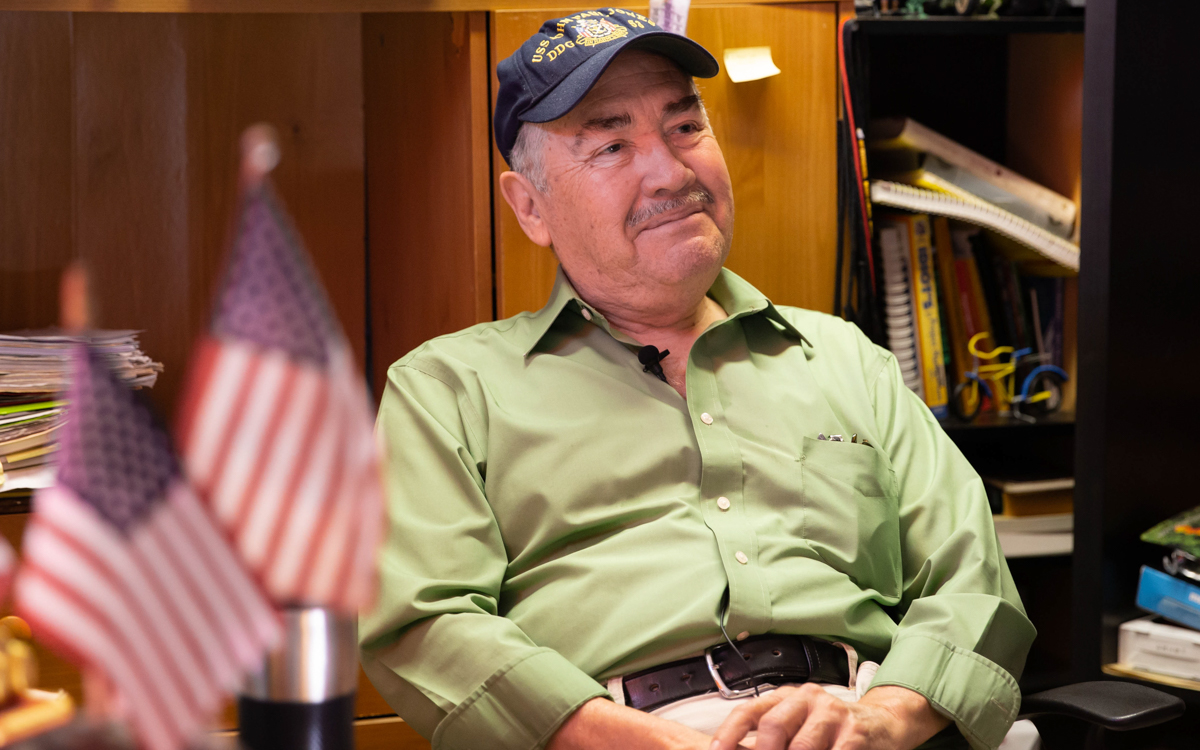
The only way home is ‘in a pine box’
For some veterans at the Bunker, time may be running out.
Jose Velasco, 75, was deported to Mexico about 18 months ago.
Velasco is tall with a big, grandfatherly grin. He has graying hair he covers with a dark blue baseball cap. His blend of accents is indicative of his Mexican heritage, as well as his many years spent in New York, where his family moved when he was 11 after spending a brief time in Los Angeles.
Velasco, who was a green card holder, was drafted by the Army in 1971 and served until 1976, leaving as a sergeant. He trained pilots and revised lesson plans. After that, he did a three year stint with the California National Guard.
He said recruiters made promises.
“The recruiter made me believe that as soon as my service ended, I was … to be an automatic citizen, which was not true. And I found out that the hard way later, much later in my life,” Velasco said.
It’s a common refrain among deported veterans. When they enlisted, many at the Bunker said, they were wrongly led to believe they automatically would become citizens.
For decades, Velasco worked in his family’s limousine business, eventually owning a small company of his own. He said he had a clean record. Having served his country honorably, Velasco never thought he could be deported.
But in 2012, he was stopped at a police checkpoint. A search of the car turned up an illegal firearm, and he was later charged with an aggravated felony. Velasco said the car and gun belonged to his cousin, and he spent years fighting his case before he was eventually deported.
“I lost all my business, and I mean everything,” Velasco said. “I got here practically penniless.”
When he arrived in Tijuana, he had no money, no phone and nowhere to go.
For two weeks he wandered around Tijuana, unsure what to do. No one in his family knew where he was.
He said he felt lucky to have found the Bunker. The volunteers let him stay in the house, made sure he was fed and set him up with his VA benefits.
“If it wasn’t for (Yolanda) and the Bunker and Mr. Barajas, I probably would have been asking for money up there outside the church in downtown Tijuana,” Velasco said.
Despite his situation, he appears to be in good spirits. After his wife died years ago, he met a woman in Tijuana through the shelter and remarried.
“That takes off some of my psychological pressure,” he said.
But when he talked about his grandchildren and great-grandchildren spread around the U.S., his eyes saddened.

“I have never left my family,” Velasco said, adding that his deportation was “very bad for my grandchildren. I’m very close to my grandchildren and getting closer to my great-grandchildren.”
He doesn’t see them much anymore because his family is hesitant about visiting Tijuana because of safety reasons.
Velasco is still fighting to get back to his family and now is represented by the ACLU. But some days, he has doubts.
After a deported veteran dies, the body can be repatriated to the U.S. and receive a military burial. Velasco has begun to come to terms with the possibility he may never make it home alive.
“They say the only way you’re going to get across back to your hometown, back to your country, is in a pine box,” he said. “So maybe I’ll go back in a pine box if I have no other choice.”
Hope for the future
The issue of deported U.S. veterans has received renewed attention in recent months.
One day after lawmakers introduced the Veteran Deportation and Prevention Act of 2019, the Judiciary Committee’s subcommittee on immigration and citizenship invited Barajas-Varela to speak before Congress on the impact of U.S. immigration laws on veterans and their families.
“Under today’s laws, most deported veterans only come home to America with an American flag draped around their casket,” he told the subcommittee. “There is no honor in bringing deported veterans home to be recognized or thanked for their service only when they die.”
With the spotlight on deported veterans, Barajas-Varela hopes his fellow servicemembers can someday return home.
“A lot of good things are happening now,” he said. “We’re starting to see guys getting pardoned, legislation.”
However, deported veterans being legally allowed to return to the U.S. is rare, the ACLU said.
The New York Times reported that Barajas-Varela was among the first, along with Marco Chavez and Erasmo Apodaca, Marine veterans who also were pardoned by California’s Gov. Brown in 2017.
Now that he’s free to enter the U.S., Barajas-Varela said he’s begun mending his relationship with his daughter, and he plans to return to school.
Lately, he has become more self-reflective. He said the reason he opened the Bunker in 2013 was to keep himself focused and help others in the same situation. But in the past year, he’s begun to see his work as a way of atoning for past behavior.
“I’ve been a knucklehead all my life, and I’ve always made bad decisions,” he said. “I’ve never thought about the people that were involved (in the shooting incident). What about their trauma?”
Exiled servicemembers find comfort and camaraderie at the Bunker, but ultimately it’s not the place they long to be.
“I still don’t feel at home,” said Richard Avila, a veteran of the Vietnam War who has lived as a deportee in Tijuana for 8 years.
“I’m an American, and I’d like to go home someday.”
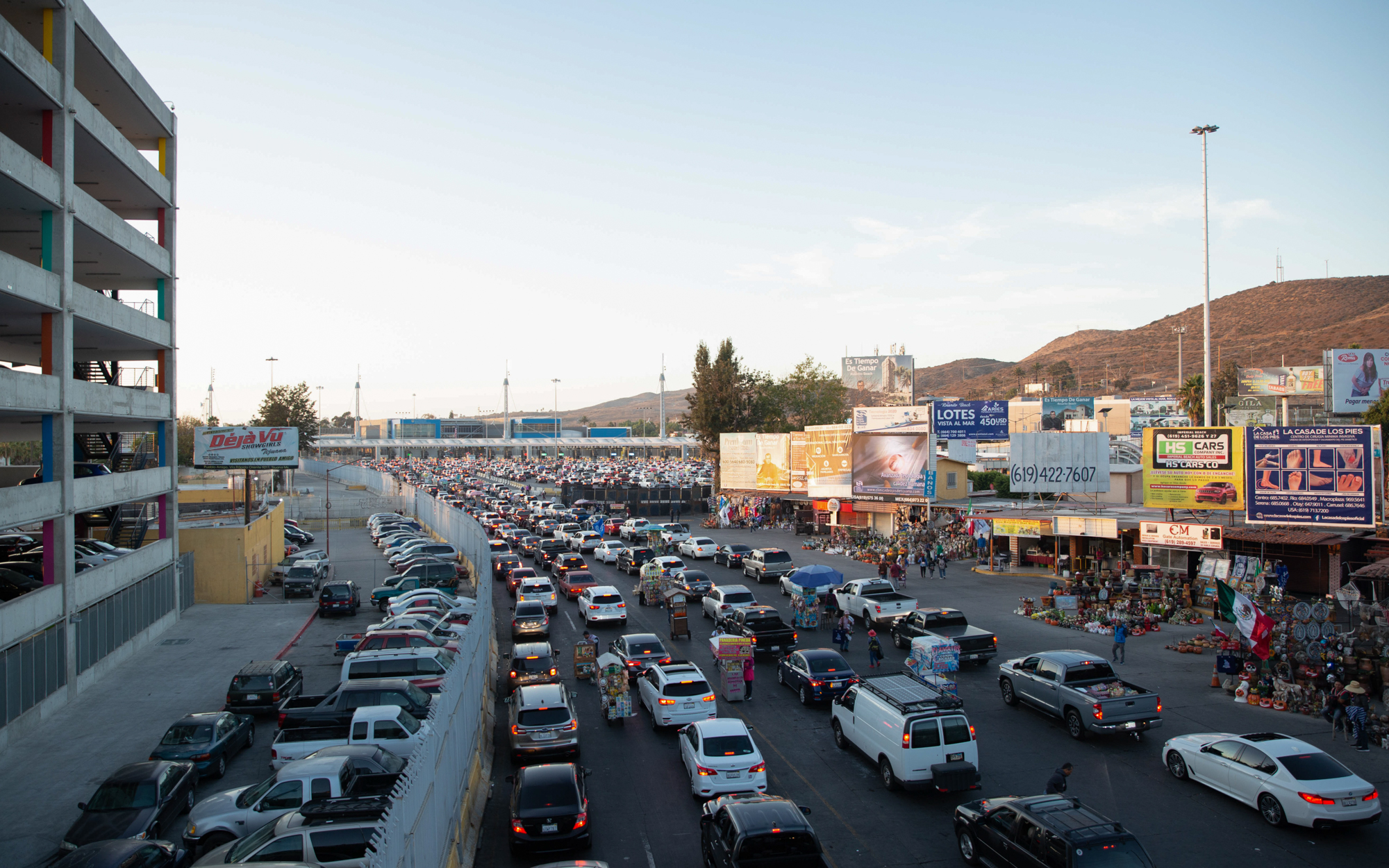
The San Ysidro port of entry at the California-Mexico border, which connects San Diego and Tijuana, is one of the busiest international crossings in the world. (Photo by Mara Friedman/Cronkite News)

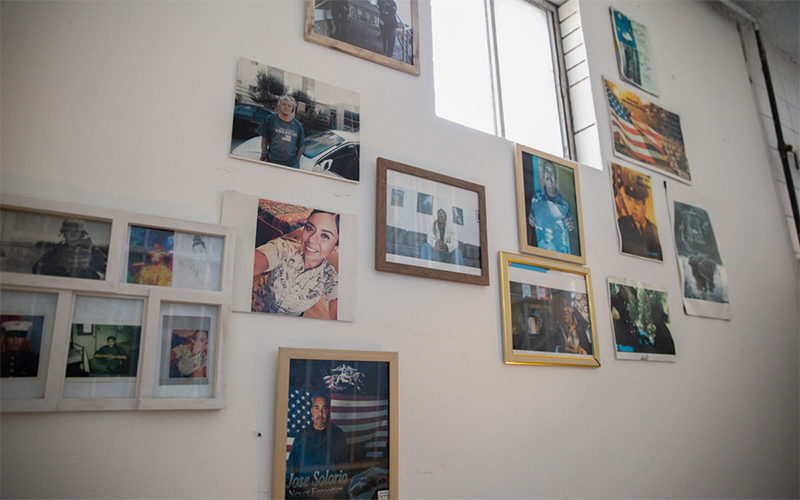
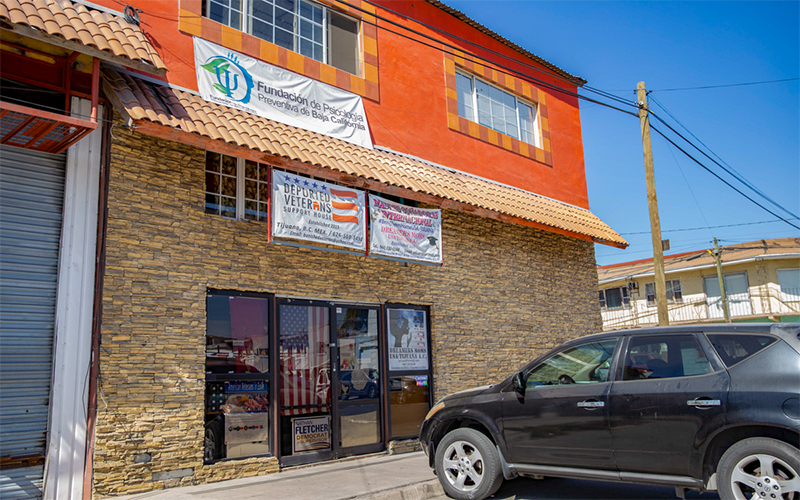
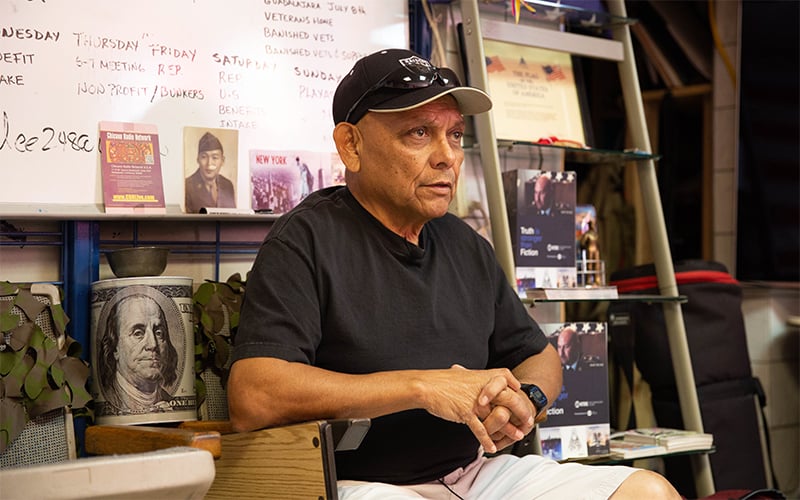
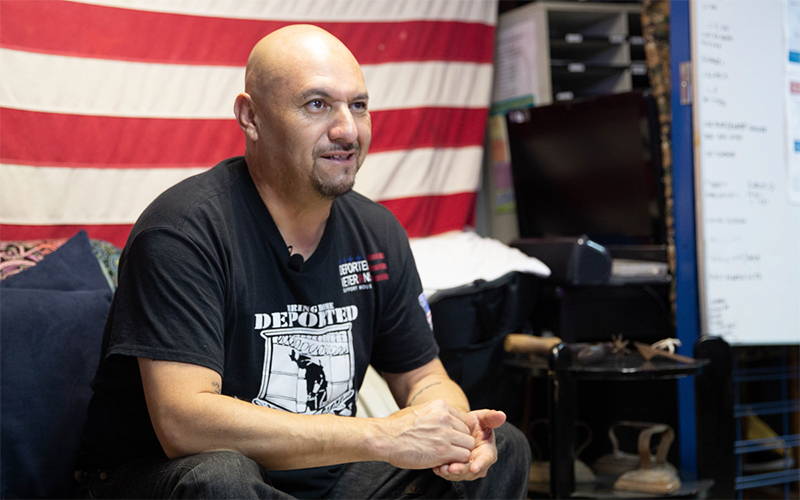
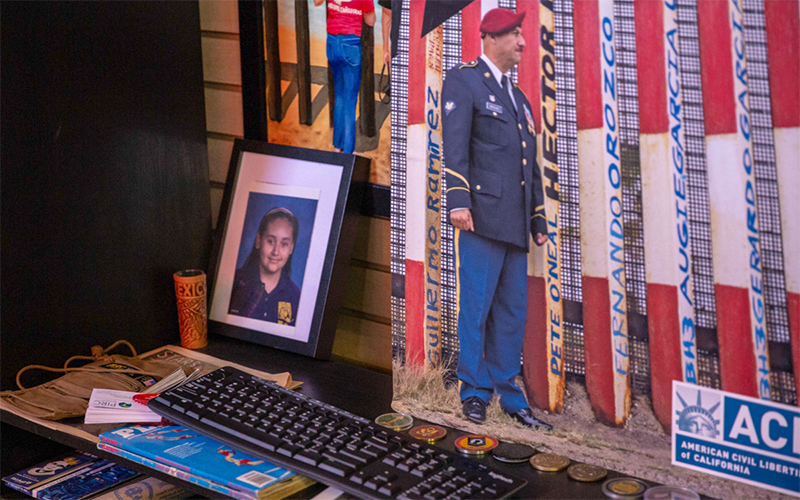
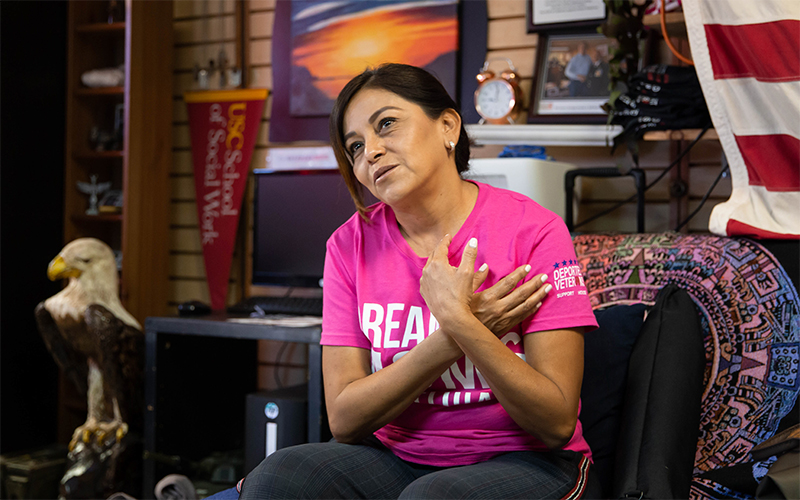

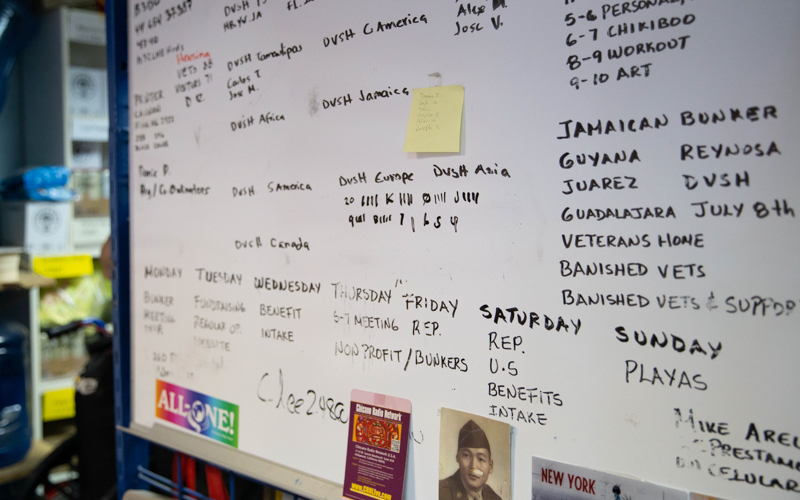
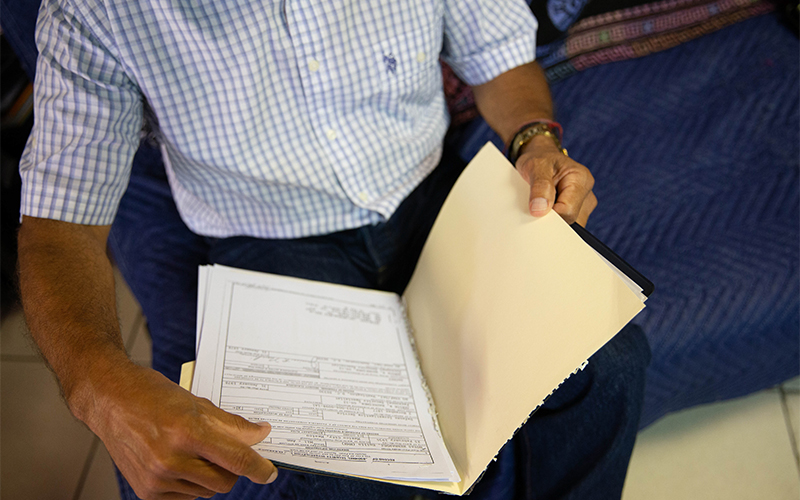

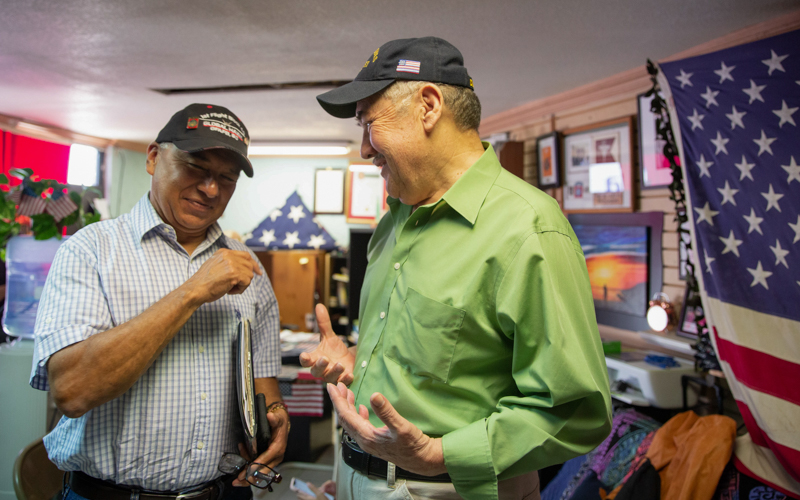
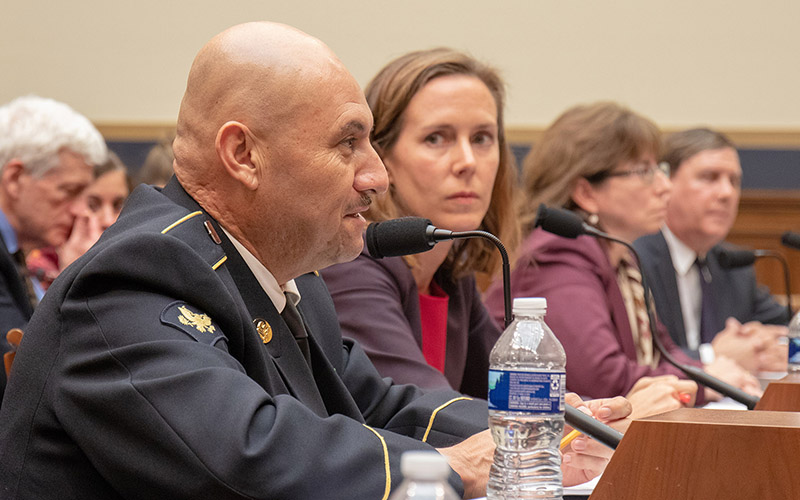
Leave a Comment
[fbcomments]